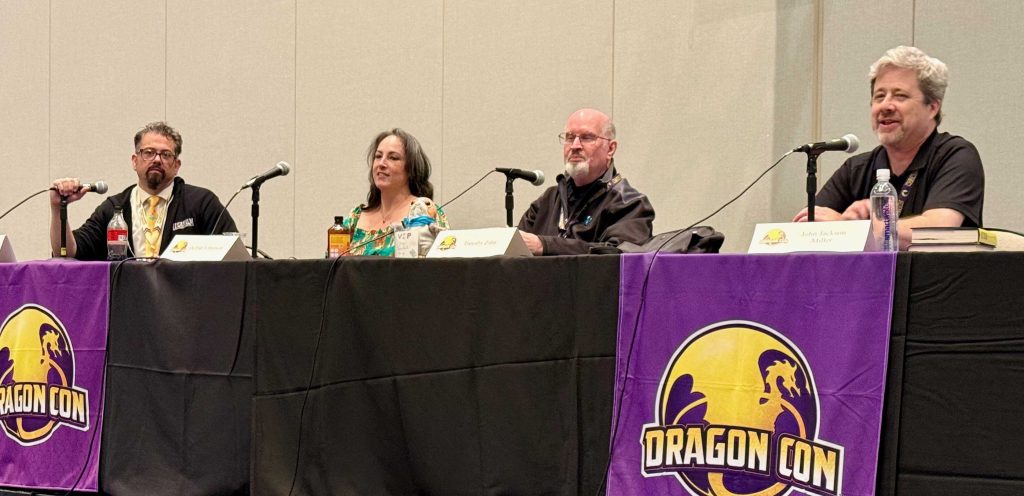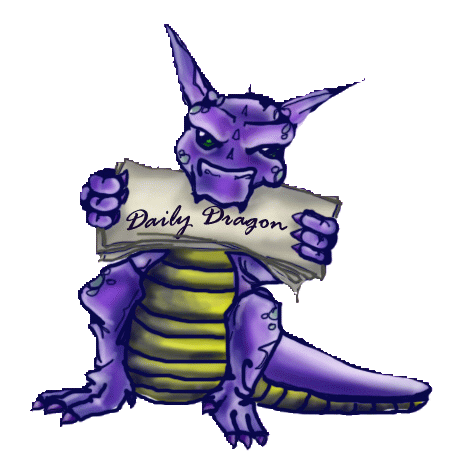Saturday afternoon at 4:00PM the Star Wars track brought together a group of Star Wars authors to discuss both the art and the craft of writing in George Lucas’s universe. Moderated by Bryan Young, the session welcomed Delilah S. Dawson, John Jackson Miller, and Timothy Zahn to the Hyatt Centennial I. Young, a prolific writer and veteran panel moderator, led group through a wide ranging and fascinating hour.

The panel launched the session by considering the dynamics and complexities involved in publishing a Star Wars novel. Young pointed out that this is not a world for unsolicited manuscripts. Dawson added that there is, in fact, an elaborate process. If an author is among the stable of creatives the publisher works with, editors will reach out to inquire if they are interested in developing a story about a subject. If so, authors must work on a tight timeline, eventually writing a detailed outline that goes through a series of reviews. One of Dawson’s outlines had comments from seventeen editors! Once approved it is imperative that the author meet the deadline that the publisher has set. In the Star Wars publishing world, it is very much controlled by the publishing houses and Disney.
Zahn’s experience, given his longevity, differed. Author of seventeen Star Wars novels and nineteen short stories, Zahn has received more room in which to work. They have asked him to identify the eras he’s most interested in, and from that list chosen which story to greenlight. In the days of Heir to the Empire, originally published in 1992 as a sequel to Star Wars Return of the Jedi, Zahn worked with editors who didn’t necessarily know much about Star Wars. The canvas was much more open and blank but again he had to work through the outline and editorial process.
It took Miller years to finally get an idea approved for development and publication. He developed a series of pitches in 1994, and it was more than a decade later before he got one approved for publication. One of the lessons Miller took away from the experience, which the entire panel endorsed, was just how critical it is to keep everything you write. He originally developed those pitch ideas on an Apple 2 computer, and he can still open those files today! “Keep them and work them,” he declared. Zahn added that you never know what you might use so it’s important to preserve that material.
The conversation then turned to character development. Dawson finds it really fulfilling to create a character and give it a real challenge. As an author, how do you work through the dynamic of a character facing challenges, especially those that are fundamentally moral and ethical? Her character Iskat, the protagonist in her 2024 novel Star Wars Inquisitor: Rise of the Red Blade, grapples with those questions as her faith in the Jedi order wanes due to the double trauma of the death of her master and the horrors of the Clone wars. “How does a Jedi become an Inquisitor?” she asked. Zahn really appreciated Dawon’s insight. His work also examines the complexities of the relationship between power and arrogance. Consider that the Jedi take children away from their families to become padawan learners. “What level of arrogance must you have for that to be ok?” Miller’s Star Wars: The Living Force has sixteen major characters in it. They’ve known one another for a long time, and they don’t all like one another that much. Working through those complex relationships and finding the story within the story is the key to success.
The panelists represent decades of writing experience, and for anyone interested in both the art and business of professional writing, this was “must see.” For Dawson, writing is her “oasis,” a place where she can “be her best self.” For Zahn, coming up with the idea for a story is fun. Bringing it to life on paper, however, bringing the threads of a story together and weaving them into a narrative conclusion, is work. It was an hour of insight all in attendance truly appreciated.
